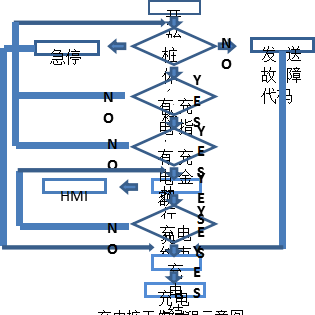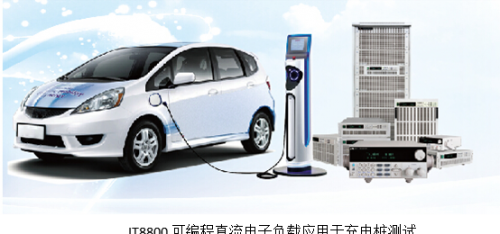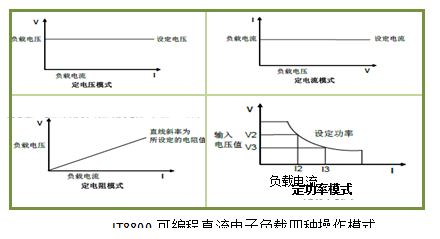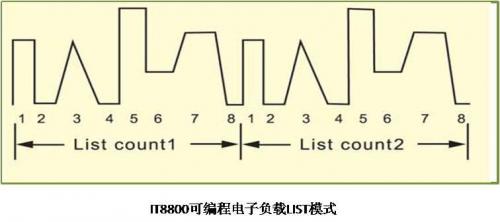Working process of charging pile
The charging pile is a power station for electric vehicles. Its function is similar to that of a gas pump in a gas station. Each charging pile is equipped with a charging plug. The charging pile can charge various models of electric vehicles according to different voltage levels. So what is the working process of the charging pile? First, the charging pile detects whether there is voltage on the charging line to determine the current battery status. Then the control software sends a start command to the charging pile through the CAN bus to start the charging output. If there is no source voltage on the charging circuit, the charging pile will throw a hardware fault and stop working. The charging pile needs to be restarted to restart charging (as shown in the figure below).

Traditional charging pile test
As the main charging equipment for electric vehicles, the safety and reliability of DC charging piles are directly related to the reliable operation and comprehensive promotion of electric vehicles. Therefore, the safety and reliability testing of charging piles is very important.
At present, the actual environment test method is usually used in the testing process of charging piles, that is, the characteristics of the charging pile are tested through a physical battery corresponding to the power of the charging pile. The disadvantages of this test method are as follows:
- It is impossible to make real-time judgment on the working condition of the charging pile during the test
- Unable to accurately test the charger output
- Unable to obtain accurate test results
- Unable to quickly perform repeated tests, low testing efficiency
- High testing cost
Itech IT8800 programmable electronic load charging pile test
The use of programmable electronic loads to test charging piles does not have the drawbacks of the actual environment test method. ITECH IT8800 series programmable multifunctional wide-range electronic loads have a power range of 150W to 600KW, and the measurement accuracy of current and voltage can reach 0.01mV, 0.01mA. IT8800 can provide constant voltage, constant current, constant resistance and constant power dynamic working modes, with a data storage capacity of 100 groups, and built-in standard RS232, USB, GPIB communication interfaces to meet the relevant requirements of charging pile testing.

So how to use IT8800 electronic load to test charging pile?
First, connect the charging pile, charging start trigger and IT8800 electronic load (charging trigger is the power supply) in parallel, set the voltage limit of the charging trigger to the lowest charging voltage of the charging pile, then turn on IT8800, select CV mode and use the lowest charging voltage of the charging pile as the load parameter value of the electronic load CV mode. And start IT8800 to load. At this time, after stable loading, the load is equivalent to a stable voltage source and can absorb any current within the rated range.

Then send a start signal through the CAN bus to start the charging pile. If the charging pile starts successfully, the load power of IT8800 increases, and the panel display can observe the voltage, current, and power output of the charging pile. If the charging pile fails to start, the load power of IT8800 remains unchanged, and the panel displays the real-time voltage and current as zero. The charging pile will output in different charging modes during the charging process, such as constant current to constant voltage, constant current, constant voltage, fast charging, etc. The IT8800 DC electronic load LIST mode can be used to simulate battery charging, realize different mode charging, mode conversion, dynamic and other charging process simulations. At the same time, IT8800 also provides powerful test software for free, which can monitor and record data in real time to realize the detection of charging piles.

Charging piles usually have high power output, so the programmable electronic load must be high power. The maximum power of ITECH IT8800 electronic load can reach 600KW, which can fully meet the function and power requirements of charging pile testing.
in conclusion
Itech Electronics has been committed to the research of related industry testing fields with "power electronics" products as the core. The IT8800 series programmable electronic load is one of many star products. It inherits the consistent high performance and high quality of Itech products, and can ensure the efficient and accurate completion of various related tests, provide guarantee for the quality of charging pile products, and promote the development of the new energy electric vehicle industry.
Previous article:ITECH power supply aging test system efficiently completes aging test of LED lighting products
Next article:ESP system performance test solution based on PXI platform
Recommended ReadingLatest update time:2024-11-16 22:56

- Keysight Technologies Helps Samsung Electronics Successfully Validate FiRa® 2.0 Safe Distance Measurement Test Case
- From probes to power supplies, Tektronix is leading the way in comprehensive innovation in power electronics testing
- Seizing the Opportunities in the Chinese Application Market: NI's Challenges and Answers
- Tektronix Launches Breakthrough Power Measurement Tools to Accelerate Innovation as Global Electrification Accelerates
- Not all oscilloscopes are created equal: Why ADCs and low noise floor matter
- Enable TekHSI high-speed interface function to accelerate the remote transmission of waveform data
- How to measure the quality of soft start thyristor
- How to use a multimeter to judge whether a soft starter is good or bad
- What are the advantages and disadvantages of non-contact temperature sensors?
- Innolux's intelligent steer-by-wire solution makes cars smarter and safer
- 8051 MCU - Parity Check
- How to efficiently balance the sensitivity of tactile sensing interfaces
- What should I do if the servo motor shakes? What causes the servo motor to shake quickly?
- 【Brushless Motor】Analysis of three-phase BLDC motor and sharing of two popular development boards
- Midea Industrial Technology's subsidiaries Clou Electronics and Hekang New Energy jointly appeared at the Munich Battery Energy Storage Exhibition and Solar Energy Exhibition
- Guoxin Sichen | Application of ferroelectric memory PB85RS2MC in power battery management, with a capacity of 2M
- Analysis of common faults of frequency converter
- In a head-on competition with Qualcomm, what kind of cockpit products has Intel come up with?
- Dalian Rongke's all-vanadium liquid flow battery energy storage equipment industrialization project has entered the sprint stage before production
- Allegro MicroSystems Introduces Advanced Magnetic and Inductive Position Sensing Solutions at Electronica 2024
- Car key in the left hand, liveness detection radar in the right hand, UWB is imperative for cars!
- After a decade of rapid development, domestic CIS has entered the market
- Aegis Dagger Battery + Thor EM-i Super Hybrid, Geely New Energy has thrown out two "king bombs"
- A brief discussion on functional safety - fault, error, and failure
- In the smart car 2.0 cycle, these core industry chains are facing major opportunities!
- The United States and Japan are developing new batteries. CATL faces challenges? How should China's new energy battery industry respond?
- Murata launches high-precision 6-axis inertial sensor for automobiles
- Ford patents pre-charge alarm to help save costs and respond to emergencies
- New real-time microcontroller system from Texas Instruments enables smarter processing in automotive and industrial applications
- MSP430F2001IPW
- Analysis of ST MCU Model Rules
- Xunwei IMX6ULL development board builds a web server
- Where exactly is China leading in 5G?
- Audi car engine regularly stops and cannot start. Oscilloscope detection solution
- FPGA design ideas and techniques: data interface synchronization
- After __wfi is run, is the MCU still running the code?
- CC2640 Questions and Answers
- Who is the source manufacturer of the 3651 orthogonal convex tooth sensor? Is there anyone who can be its agent?
- Which is faster for switching, MOS or Darlington?

 Designing with Distributed Power Architecture
Designing with Distributed Power Architecture Electronic Testing Key Points
Electronic Testing Key Points DN378 Low Quiescent Current Monolithic Step-Down Regulator
DN378 Low Quiescent Current Monolithic Step-Down Regulator Design of adjustable AC electronic load based on ATmega48 microcontroller
Design of adjustable AC electronic load based on ATmega48 microcontroller















 京公网安备 11010802033920号
京公网安备 11010802033920号